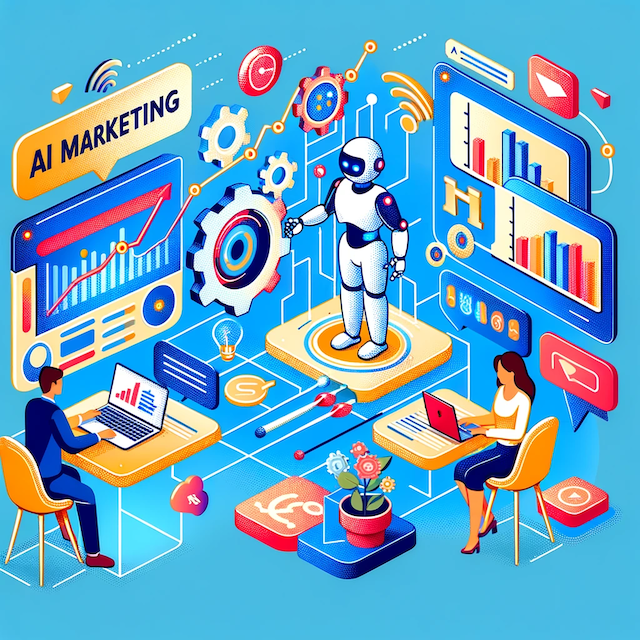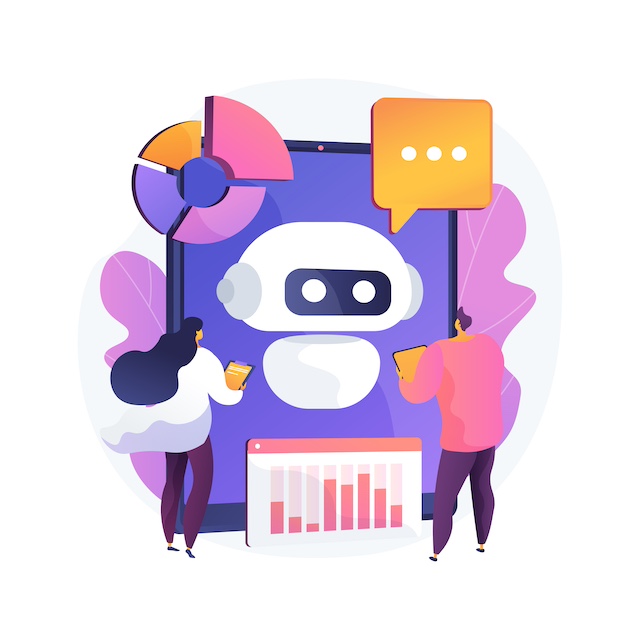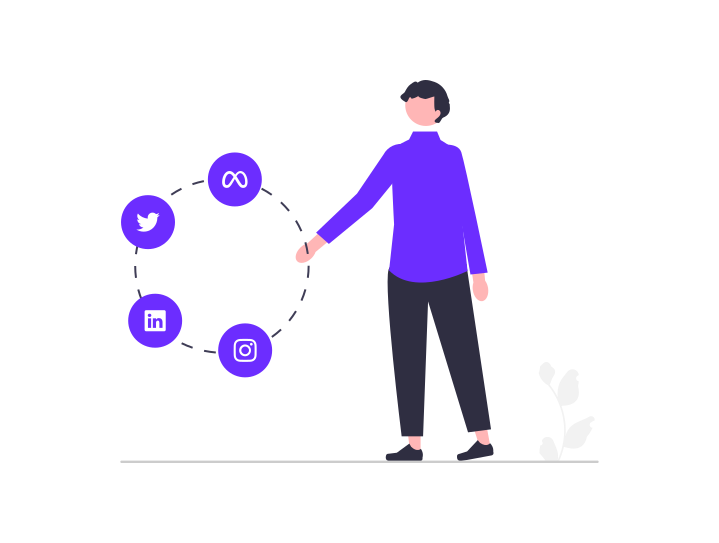As we step into 2025, I find myself both amazed and excited by the rapid pace at which artificial intelligence is transforming the world of marketing. Just a few years ago, AI in marketing seemed like a distant future. Today, it’s our reality, and it’s reshaping how we connect with customers and understand markets.
In this article, I’ll share my insights and predictions on AI marketing trends for this year, and I hope it sparks some ideas for your own marketing strategies!
- Emerging AI marketing Trends to Watch in 2025
- 1. Hyper-Personalization Through AI
- 2. Voice and Visual Search Optimization
- 3. Predictive Customer Behavior Analysis
- 4. AI-Generated Content
- 5. Enhanced Customer Data Platforms (CDPs) with AI
- 6. Chatbots and Conversational AI
- 7. Programmatic Advertising Using AI
- 8. AI-Driven Email Marketing
- 9. Augmented Reality (AR) Experiences Powered by AI
- 10. Ethical AI and Transparency
- Practical Tips for Every AI Marketer
- AI marketing Trends: Conclusion
AI has transformed from a mere tool into a pivotal element of modern marketing strategies. Personalization, once a luxury, is now essential — and AI stands at its core. Imagine tailoring email campaigns and crafting content that uniquely resonates with each user.
Thanks to AI’s incredible prowess in analyzing and predicting customer preferences, this is our new reality. So let´s explore the top AI trends that are reshaping marketing, showcasing some of the top web technologies revolutionizing how we connect with audiences.
Emerging AI marketing Trends to Watch in 2025
Let’s set the stage: The global AI market, currently valued at $150.2 billion, is on an upward trajectory toward 2025. AI’s impact extends beyond boosting productivity; it’s a cost-saving powerhouse in marketing efforts.
So, let´s take a look at these trends and start capitalizing on them before your competitors do.

In the world of AI marketing, personalization has gone beyond just addressing customers by their names. It’s about understanding the nuances of each customer’s preferences and behaviors. By leveraging AI-driven analytics, we can dissect vast amounts of data to uncover individual tastes and interests. This deep insight allows us to craft experiences that resonate on a personal level, from the web pages they browse to the emails landing in their inbox.
So, how can you use this in your marketing? Start by integrating AI tools with your customer relationship management system. Analyze past interactions and use these insights to tailor every future touchpoint. Imagine sending an email that feels like it’s been written just for one person, or a website that changes dynamically to suit each visitor’s interests – that’s the power of hyper-personalization.
The rise of voice assistants and visual search technologies has been nothing short of a revolution. As a marketer, adapting to this change means understanding how people use these tools in their daily lives. For voice search, it’s about conversational keywords and natural language; for visual search, it’s the world beyond words, where images speak louder.
To capitalize on this, optimize your content for voice search by using long-tail, conversational keywords. For visual search, focus on high-quality, well-tagged images and consider AI tools that enhance visual search capabilities. This could mean rethinking your SEO strategies but believe me, it’s worth it as you’ll be reaching customers in ways you haven’t before.
The ability of AI to predict what customers will want next is like having a crystal ball. Using historical data, AI can forecast future buying patterns, giving us a sneak peek into what our customers might want next. This kind of predictive power transforms how we approach marketing, making it more targeted and efficient.
Start incorporating AI tools that analyze customer behavior and predict future trends. Use these predictions to tailor your marketing campaigns and product recommendations. It’s all about staying one step ahead of the customer’s needs, and AI gives you the shoes to do just that.
Content creation, traditionally a wholly human endeavor, is being revolutionized by AI. From drafting simple reports to creating compelling blog posts, AI is stepping up as a valuable team member. While it may not replace human creativity, it certainly enhances it, offering a helping hand in generating ideas and initial drafts.
To take advantage of AI-generated content, start with AI tools for generating content ideas or first drafts. It’s like having an assistant who works tirelessly, providing you with a base to build upon. You can then add your creative touch, ensuring the final output resonates with your audience.
Imagine having a tool that not only collects customer data but also interprets it for you. That’s what AI-enhanced CDPs do. They turn raw data into actionable insights, giving you a clearer picture of your customer base. This deep understanding is crucial for crafting targeted marketing strategies.
Start by integrating AI with your existing CDPs. Let the AI analyze data patterns and customer behaviors, helping you segment your audience more effectively. Tailor your marketing strategies based on these insights, ensuring that your message hits the mark every time.
The evolution of chatbots is something to behold. Gone are the days of robotic, unhelpful responses. Today’s AI-powered chatbots offer natural, helpful interactions, almost indistinguishable from human ones. They’re transforming customer service, offering instant, 24/7 support.
Implement advanced AI-powered chatbots on your digital platforms. Program them to handle a wide range of queries, providing your customers with instant answers and support. It’s like having an ever-present customer service team, ensuring no customer query goes unanswered.
AI is changing the game in advertising. By automating the buying of ads and optimizing targeting and bidding in real-time, AI makes the advertising process more efficient and effective. This means your ads reach the right people at the right time, maximizing your marketing spend.
Embrace AI-driven programmatic advertising. Let the algorithms analyze data and make real-time decisions on where and when to place your ads. This not only saves time but also ensures your ads are more targeted and effective.
Email marketing, a staple in digital marketing, is getting a facelift with AI. By personalizing content and optimizing send times, AI-driven email marketing ensures that your message lands in the right inbox at the right time. This personalized approach leads to higher engagement and conversion rates.
Use AI tools to segment your audience more accurately and personalize your email content. Let AI determine the best time to send emails, maximizing open rates and engagement. It’s about making each email feel like it was crafted just for the recipient.
AR in marketing isn’t just about wow-factor; it’s about creating immersive, interactive experiences that engage customers on a deeper level. With AI, these experiences become even more personalized and relevant, offering a unique way to experience products and brands.
Start experimenting with AR campaigns that offer immersive experiences to your customers. Use AI to tailor these experiences based on individual customer data, ensuring each interaction is as relevant and engaging as possible.
As AI becomes a staple in marketing, the need for ethical practices and transparency grows. It’s crucial to use AI responsibly, ensuring customer data is handled with care and AI decisions are transparent.
Make transparency a core part of your AI strategy. Communicate clearly with your customers about how AI is being used in your marketing efforts. Ensure compliance with data privacy laws and uphold high ethical standards. Building trust is key, and transparency is the foundation.
Practical Tips for Every AI Marketer

If AI feels like a vast ocean, start by dipping your toes. Begin with a small project or a single aspect of your marketing strategy. Maybe it’s using an AI tool for social media insights or a chatbot for customer service. This approach lets you test, learn, and understand AI’s impact without overwhelming yourself or your team.
Once you’re comfortable and see positive results, gradually scale your AI initiatives. You can expand to other areas like email marketing, content creation, or data analysis. Remember, it’s not a race; it’s about finding what works best for your brand.
AI in marketing is constantly evolving. To stay on top, you need to be a lifelong learner. Follow AI and marketing blogs, attend webinars, and join online forums. Knowledge is power, especially when it comes to AI.
Don’t forget the power of networking. Connect with other marketers, tech experts, and thought leaders. Share experiences, challenges, and solutions. Collaborative learning can lead to innovative ideas and strategies.
AI is only as good as the data it works with. Ensure that you’re collecting high-quality, relevant data. Regularly clean and update your databases. Poor data can lead to misguided insights and strategies, which is the last thing you want.
Always prioritize data ethics and privacy. With great data comes great responsibility. Ensure you’re compliant with laws like GDPR and respectful of customer privacy. Trust is crucial in building lasting customer relationships.
Remember, AI is a tool, not a replacement for human interaction. Use AI to enhance customer experiences, not to replace the personal touch. Your customers still value genuine connections, empathy, and understanding – things that AI can’t fully replicate.
Train your AI systems regularly based on feedback and new data. The goal is to make AI interactions as smooth and natural as possible. Regular training ensures your AI tools are up-to-date and in sync with your customer needs.
Don’t be afraid to experiment. Try new AI tools, test different strategies, and be open to innovation. Sometimes, the most unexpected experiments can lead to breakthroughs in your marketing efforts.
Always measure the outcomes of your experiments. Use metrics and analytics to understand what’s working and what isn’t. Based on these insights, refine and adjust your strategies. Remember, every failure is a step closer to success.
In today’s world, your customers are everywhere – social media, email, your website, offline stores. Integrate AI across these channels to provide a seamless customer experience. Consistency is key in building brand trust and loyalty.
Use AI to create personalized experiences across these channels. Tailored product recommendations, personalized emails, and targeted ads can make your customers feel truly understood and valued.
The only constant in the world of AI and marketing is change. Be agile and flexible in your strategies. What works today might not work tomorrow, so be prepared to pivot and adapt.
As AI evolves, so should your skills. Keep updating your skill set to stay relevant in this ever-changing landscape. Embrace new technologies and methodologies. The future belongs to those who are prepared for it.
AI marketing Trends: Conclusion
As we navigate get into 2025, let’s embrace AI with optimism for its potential to enhance our marketing strategies. However, let’s proceed cautiously, ensuring we use AI ethically and responsibly.
I’m excited to see how AI will continue to revolutionize marketing, and I hope this article has given you some thought on leveraging AI in your marketing efforts.
